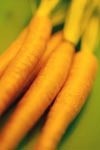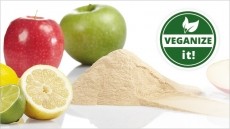Study finds no extra nutrients in dried organic food
The study, which was funded by the Danish government’s International Centre for Research in Organic Food Systems, said it is generally accepted that one of the factors driving the organic market is the belief that food grown organically is better for human health than food grown in the conventional way using pesticides.
However the researcher team from the University of Copenhagen said that it is difficult to find evidence to support this with regard to nutritionally important nutrients from commonly consumed vegetables.
Dr Susanne Bügel and colleagues set out to look at the effect of three different cultivation systems on major and trace elements in carrots, kale, peas, potatoes and apples; they also investigated whether there were differences in the retention of nutrients from organically grown produce by rats.
Their conclusion, that the study “does not support the belief that organically grown foodstuffs generally contain more major and trace elements” could hamper organic interest, if indeed nutritional beliefs are behind organic preferences.
However a spokesperson for the Soil Association in UK pointed out that consumers also consider aspects like lower pesticide residue levels and less impact on the environment when opting to buy organic.
The organic food market was valued by analyst Organic Monitor at over US$40bn (c€25.8 bn) in 2007.
The study
The study used fruits and vegetables grown in three different ways: using a low input of nutrients from animal manure and no pesticides (except one organically approved pesticide on kale only); low input of pesticides from animal manure plus levels of pesticides allowed by regulation; and high input of nutrients through mineral fertilisers and pesticides, up to legally permitted levels.
The crops were grown in similar soil, on adjacent fields, and at the same time so that they experienced the same weather conditions. The organic crops were grown on established organic soil, and all the crops were harvested and treated in the same way.
The produce was then fed to rats over a two year period, and intake (diet samples) and excretion (in urine and faeces) of major and trace minerals were assessed. The minerals under study were Ca, P, Mg, Na, K, Fe, Zn, Cu, Mo, Co, Cd, and V.
Bügel and team found no differences in the nutrients present in the crops after harvest; nor was there any evidence that the rats retained different levels of the nutrients depending on how the foodstuffs was grown.
Peter Melchett, policy director of the Soil Association, said the study is“an interesting piece of research”.
He drew attention to the fact that analyses were made on a dry weight basis, since the foods were freeze-dried straight after harvest. Organically grown produce often has a higher content of dry matter than non-organically grown, meaning that nutrients on a dry weight basis are not comparable.
This means that comparisons would be more relevant on a fresh weight basis as, except for convenience foods like crisps and soups, the fresh weight usually defines portion size.
“This means that the study may tell us something about the nutrient content of powdered soup and similar foods, but not about comparisons between organic and non-organic fresh fruit and vegetables, meat or dairy products.”
Melchett added that another weakness of the study was in growing the majority of the non-organic fruit and vegetables in soil that had previously been under organic, rather than non-organic, management. This, he said, makes it “quite unlike actual non-organic systems”.
Finally, Melchett referred to another study published by the same Danish research team earlier this year, which indicated “differences between dietary treatments composed of ingredients from different cultivation methods caused differences in some health-related biomarkers".
“In other words,” he said, “the animals fed an organic diet were actually found to be healthier than the animals given a non-organic diet.”
Source:
Journal of the Science of Food and AgricultureDOI: 10.1002/jsfa.3328"Effect of plant cultivation methods on content of major and trace elements in foodstuffs and retention in rats"Authors: Mette Kristensen, Lars Ostengaard, Ulrich Halekoh, Henry Jorgensen, Charlotte Lauridsen, Kirsten Brandt, Suzanne Bugel.





















